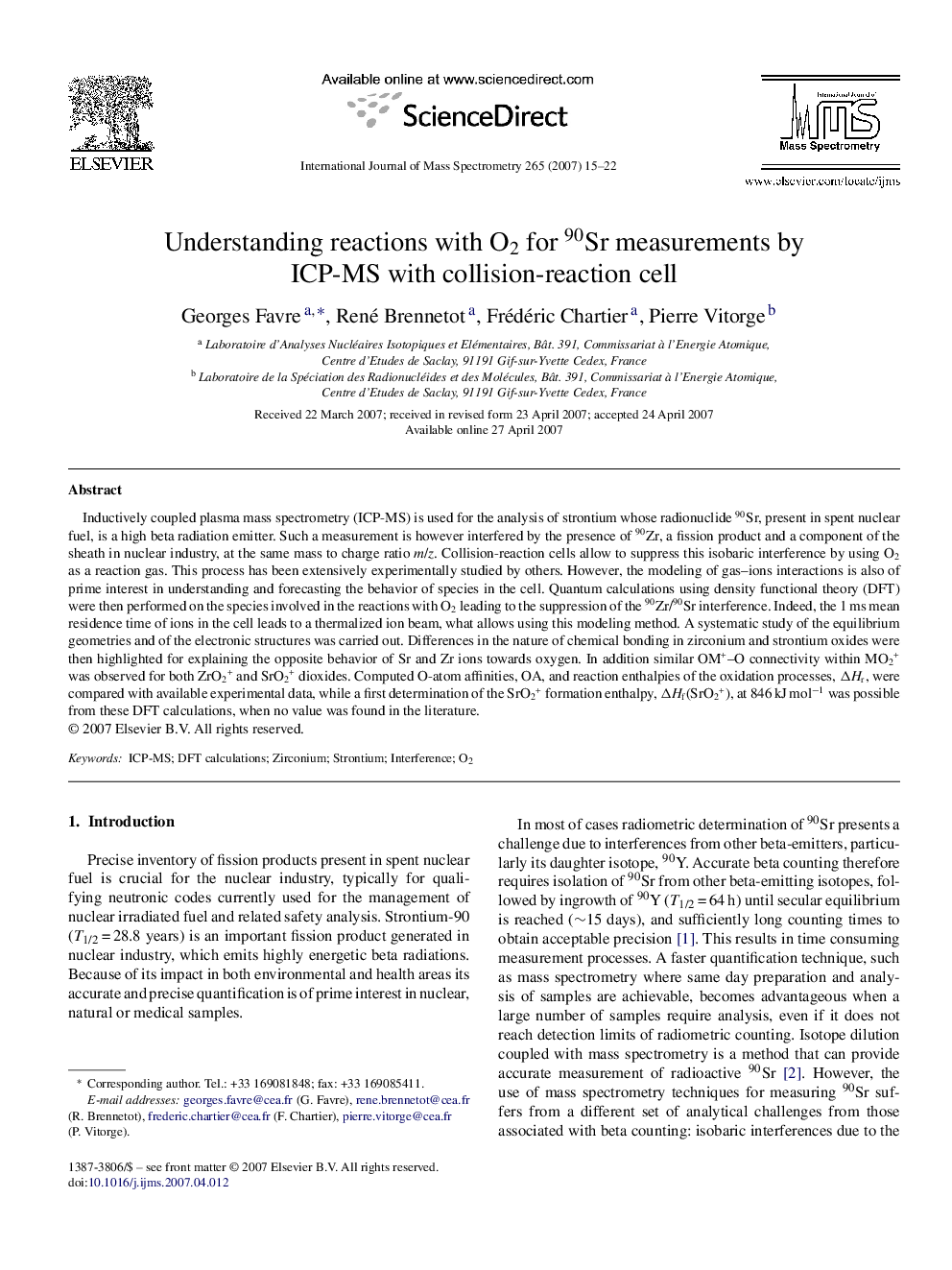| Article ID | Journal | Published Year | Pages | File Type |
|---|---|---|---|---|
| 1193489 | International Journal of Mass Spectrometry | 2007 | 8 Pages |
Inductively coupled plasma mass spectrometry (ICP-MS) is used for the analysis of strontium whose radionuclide 90Sr, present in spent nuclear fuel, is a high beta radiation emitter. Such a measurement is however interfered by the presence of 90Zr, a fission product and a component of the sheath in nuclear industry, at the same mass to charge ratio m/z. Collision-reaction cells allow to suppress this isobaric interference by using O2 as a reaction gas. This process has been extensively experimentally studied by others. However, the modeling of gas–ions interactions is also of prime interest in understanding and forecasting the behavior of species in the cell. Quantum calculations using density functional theory (DFT) were then performed on the species involved in the reactions with O2 leading to the suppression of the 90Zr/90Sr interference. Indeed, the 1 ms mean residence time of ions in the cell leads to a thermalized ion beam, what allows using this modeling method. A systematic study of the equilibrium geometries and of the electronic structures was carried out. Differences in the nature of chemical bonding in zirconium and strontium oxides were then highlighted for explaining the opposite behavior of Sr and Zr ions towards oxygen. In addition similar OM+–O connectivity within MO2+ was observed for both ZrO2+ and SrO2+ dioxides. Computed O-atom affinities, OA, and reaction enthalpies of the oxidation processes, ΔHr, were compared with available experimental data, while a first determination of the SrO2+ formation enthalpy, ΔHf(SrO2+), at 846 kJ mol−1 was possible from these DFT calculations, when no value was found in the literature.
